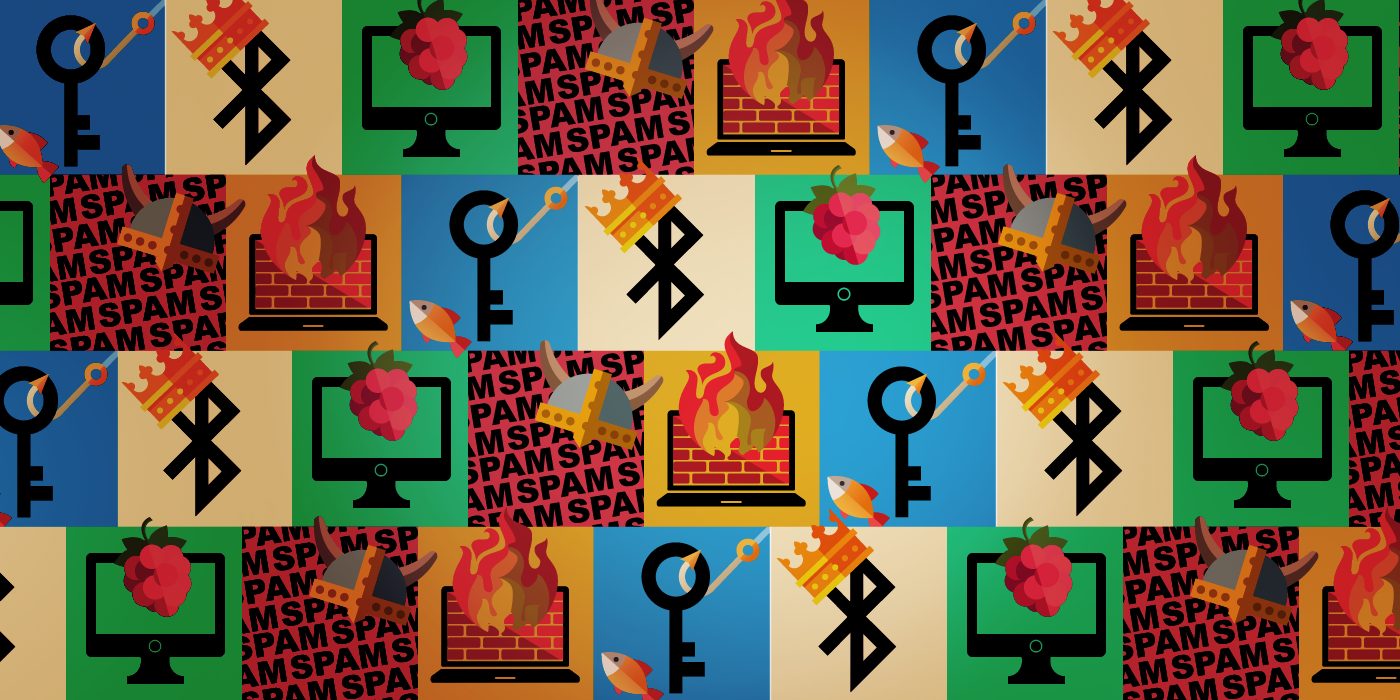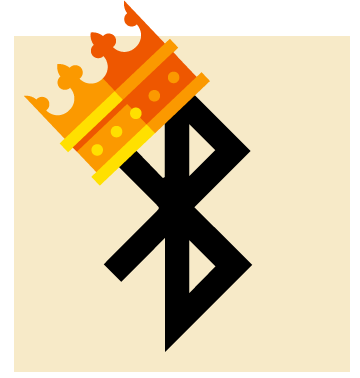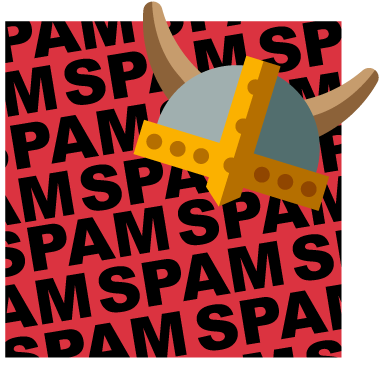The Little-Known Origins of Everyday Tech Terms
May 5, 2016
4 minute read

We use lots of tech terms every day, but have you ever stopped to think about where these odd terms came from? Why is “Bluetooth” called “Bluetooth”? Does it actually have to do with blue teeth?
Some of the most familiar terms have the most interesting and surprising origins. Here are five:
 1. Bluetooth
1. Bluetooth
Bluetooth’s name comes from royalty—10th-century Danish royalty, to be exact.
The technology is named after the second King of Denmark, King Harald Gormsson. His nickname was “Blåtand” in Danish, which means—you guessed it—“blue tooth.” Scholars widely believe that he earned the nickname from having a bad tooth that looked blue/black.
Jim Kardach, one of the founders of Bluetooth SIG, explained in an article: “King Harald Bluetooth was famous for uniting Scandinavia, just as we intended to unite the PC and cellular industries with a short-range wireless link.”
Originally, “Bluetooth” was just a code name—it was only meant to be a temporary placeholder while they came up with a better name. (Kardach said one unforgettable naming suggestion was “Flirt,” with the tagline, “Getting close, but not touching.”)
When the product was ready to go to market, the board voted to christen it “PAN (Personal Area Networking).” But everyone quickly discovered this was a terrible name for the technology, since a Google search produced millions of hodgepodge results for “pan.” It would have been a SEO disaster.
“It was decided then that we would go ahead and launch the SIG with the codename ‘Bluetooth’, but would then change the name when the marketing group came up with the official name,” he said. But even though “Bluetooth” was just a temporary moniker, it was a huge hit with the press and public. The name stuck.
Fun fact: Ever wonder where Bluetooth’s logo comes from? It’s King Bluetooth’s initials in Scandivanian runes.
 2. Raspberry Pi
2. Raspberry Pi
Tech company names can sometimes sound like the makings of a fruit salad: Apple. BlackBerry. Peach.
Add Raspberry Pi to that mix. It seems like an odd name for the popular credit-sized computer: What does raspberry pie have to do with tech?
Eben Upton, founder of Raspberry Pi, said in an interview that the name is a reference to the fruit-naming tradition of microcomputers back in the 1970s and 1980s. “In the U.K. we had Apricot [Computers]. We had Tangerine [Computer Systems]. We had even Acorn [Computers], which is technically a fruit,” he said. “Raspberry was one of the few remaining fruits that wasn’t taken, and it’s also the rudest fruit because it’s like blowing a raspberry.”
And as for the “Pi,” that’s short for Python. “We thought about making machines that could just run Python. It wasn’t going to run on Linux. But we shortened it to be ‘Pi’ because we thought it would make a great logo,” he said in the interview. “I hated the name for the first year, but it grew on me and I’ve grown to love Raspberry Pi as a name.”
 3. Phishing
3. Phishing
Coined in 1996 by hackers stealing AOL accounts and passwords, the term phishing (as you probably surmised) is a play on “fishing.” Cyber criminals use fraudulent emails as bait to “fish” for sensitive information like passwords from the vast “sea” of Internet users.
The fishing analogy runs strong in the world of information security. Consider:
- Spear phishing: When the email targets a specific individual or organization, the “hook” is more powerful and dangerous (i.e., a spear) because the hackers do a little research and may know your name, replicate your email signature and logo, etc.
- Whaling/harpooning: When the email is specifically aimed at executive-level management, hackers are going after much bigger fish, or “whales,” and using much more effective lures
- Operation Phish Phry: This FBI investigation netted almost 100 cybercrooks who were involved in a multinational phishing operation back in 2009
Ever wonder why phishing is spelled with a “ph”? Phone hackers were called “phreakers” or “phreaks” in the 1990s, so it makes sense that fishing + phreaking = phishing. By 1996, hacked email accounts were known as “phish.”
 4. Spam
4. Spam
We all know the canned meat known as SPAM (whose name comes from spiced ham), but how did it become associated with junk mail?
Surprisingly, it’s derived from a 1970 Monty Python sketch (featuring Vikings, no less.)
In the sketch, a group of Vikings interrupt the conversation in a cafe by loudly singing, “Spam spam spam spam. Lovely spam! Wonderful spam!” and drown each other out. The song embodies the essence of spam: repetitive, annoying, useless words.
According to some etymological research, the term “spam” goes back to the 1980s in the MUD (multi-user dungeon) community, which was a real-time, shared world where users could chat and move around. The word “spamming” was used to describe flooding chats with useless text and flooding the computer with data and crashing it. Some reports also say that in earlier chat systems, like Bitnet’s Relay, people would dump in the lyrics of the Monty Python Spam Song and irritate others.

 5. Firewall
5. Firewall
The term “firewall” is borrowed from the world of firefighting, where a wall or barrier made of brick or steel is constructed to prevent the spread of fire. Similarly, a computer firewall is a security barrier for computers. It’s meant to behave as a barricade between trusted and untrusted networks and only allow certain types of traffic in.
Do you know of any other tech terms with an unusual or unexpected history?



 1. Bluetooth
1. Bluetooth 2. Raspberry Pi
2. Raspberry Pi 3. Phishing
3. Phishing 4. Spam
4. Spam 5. Firewall
5. Firewall


